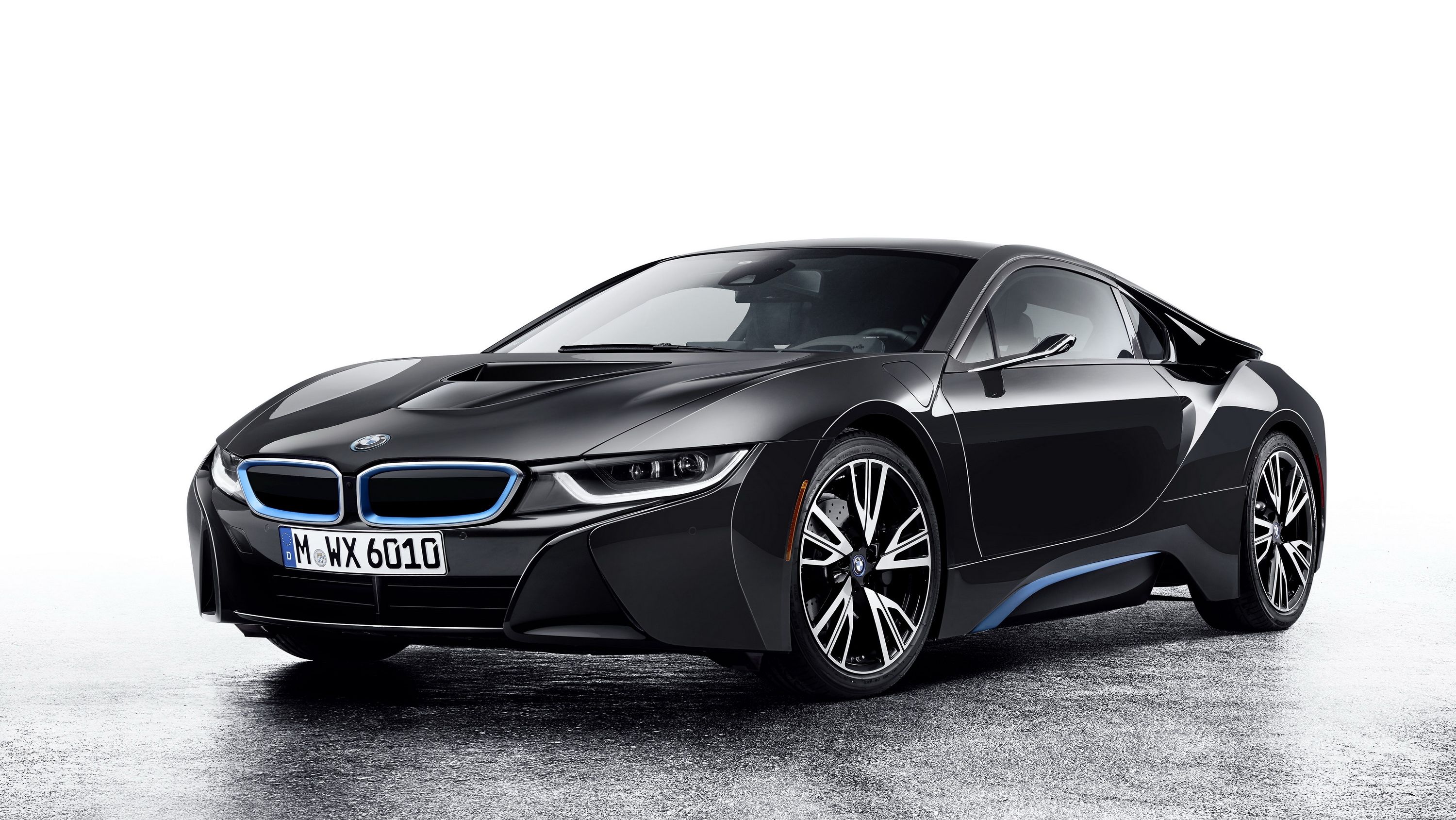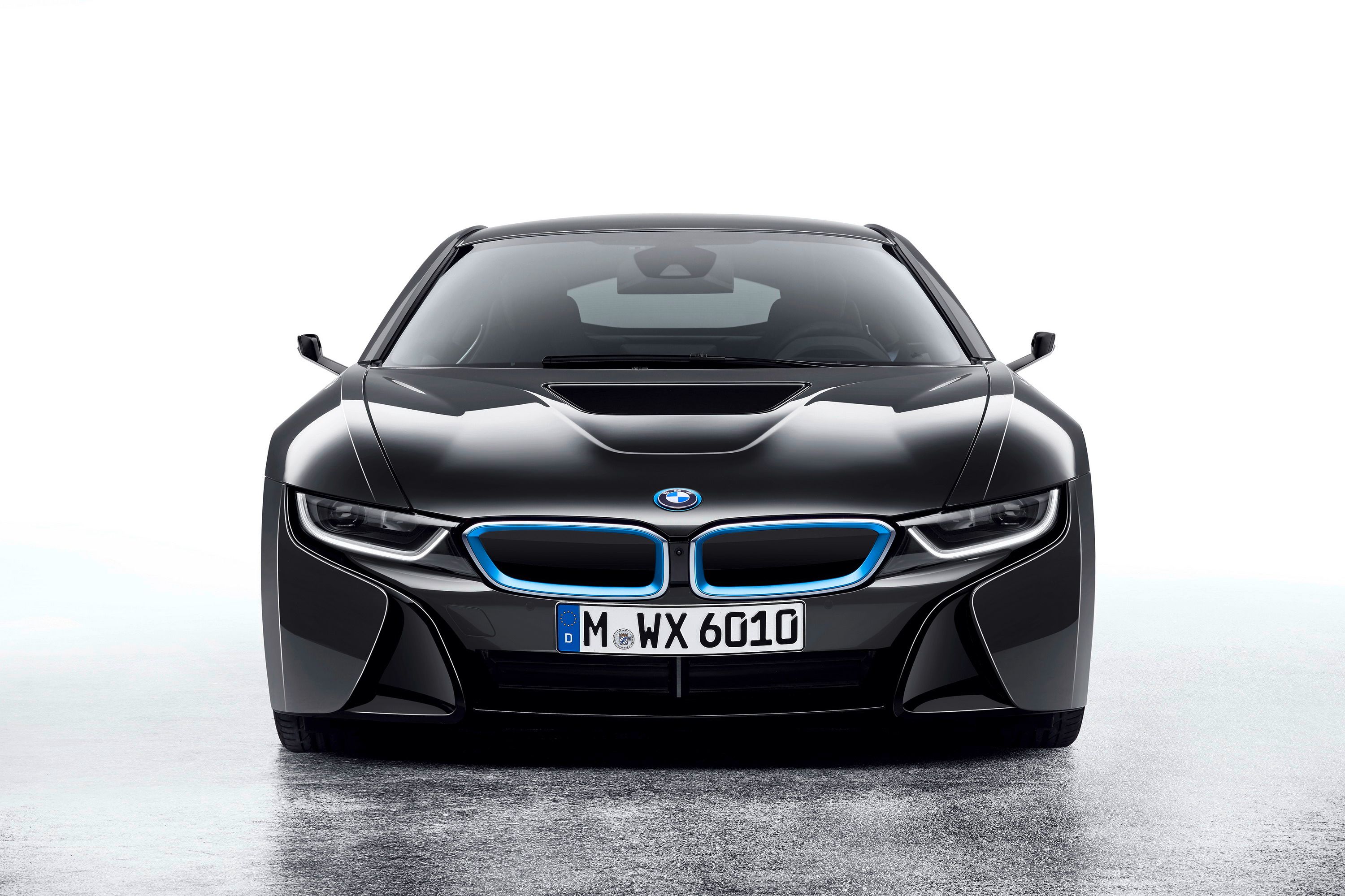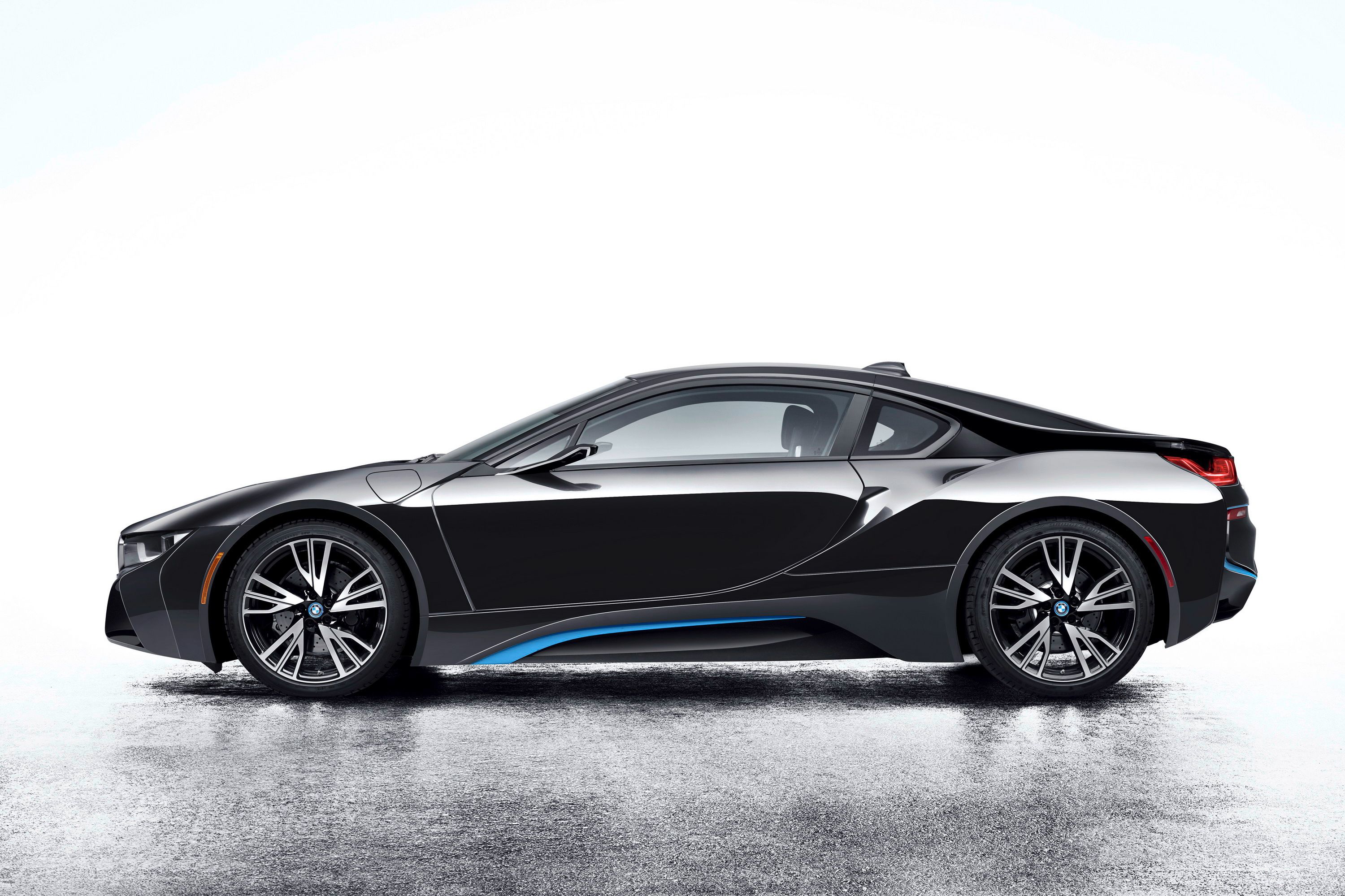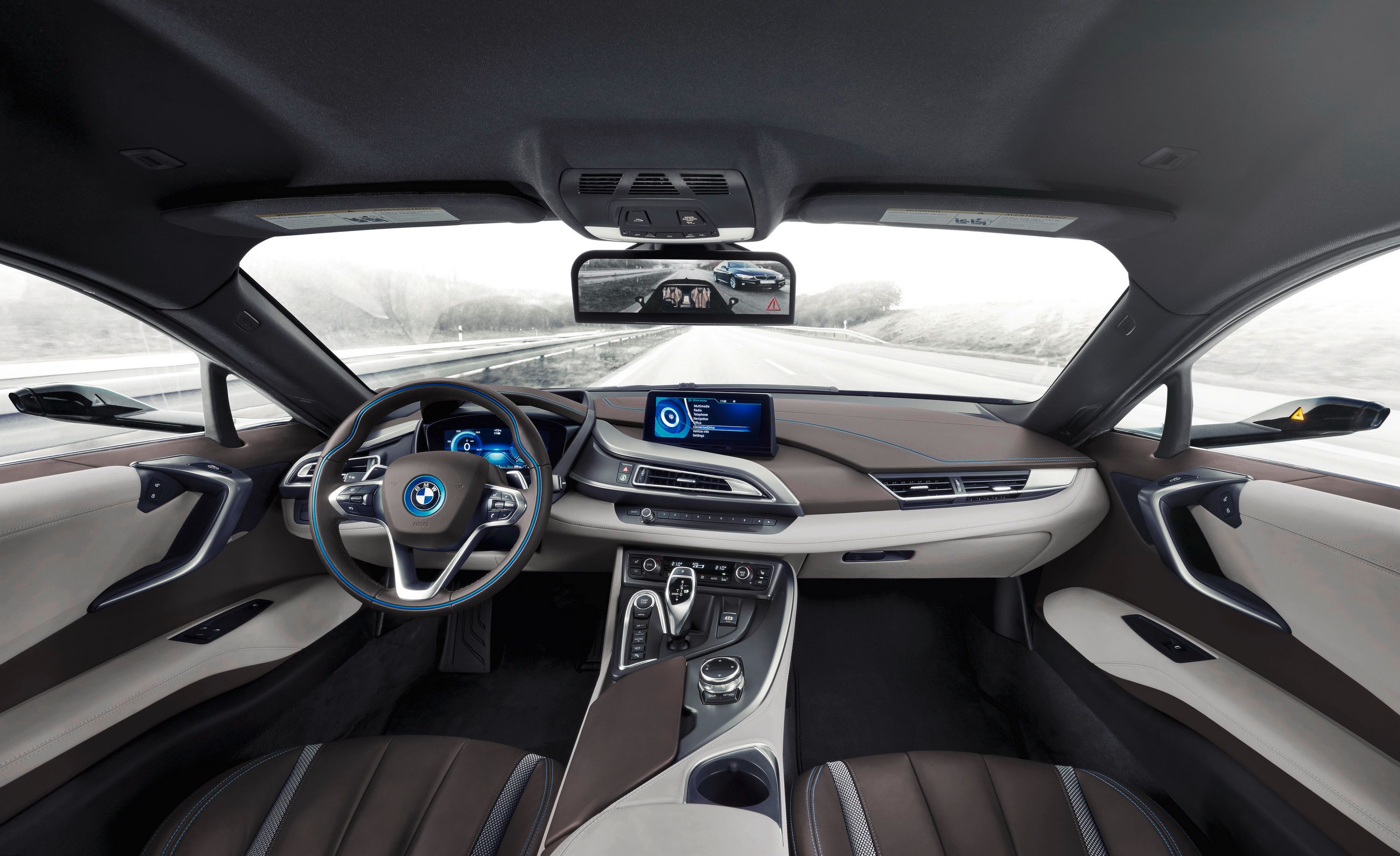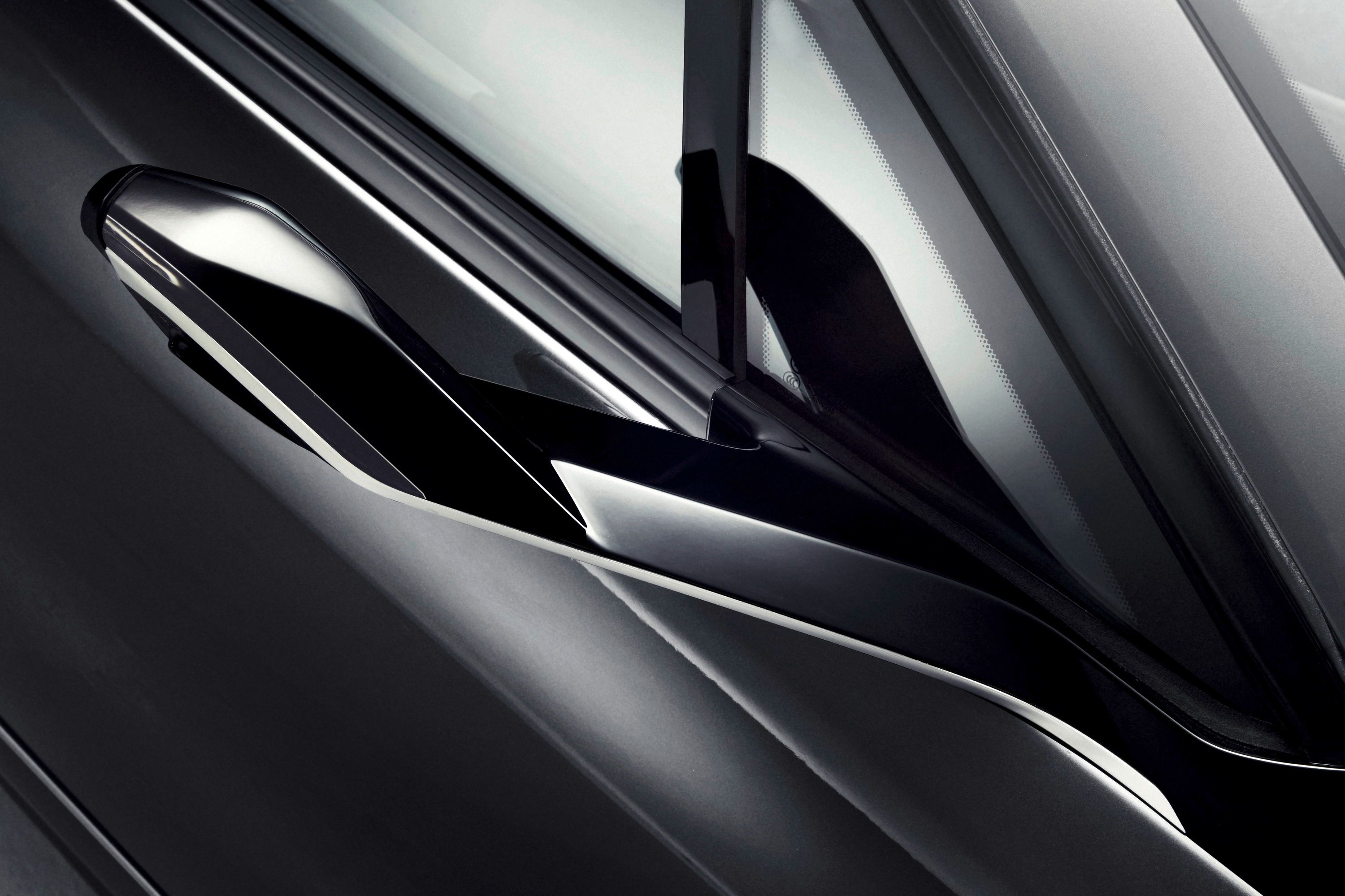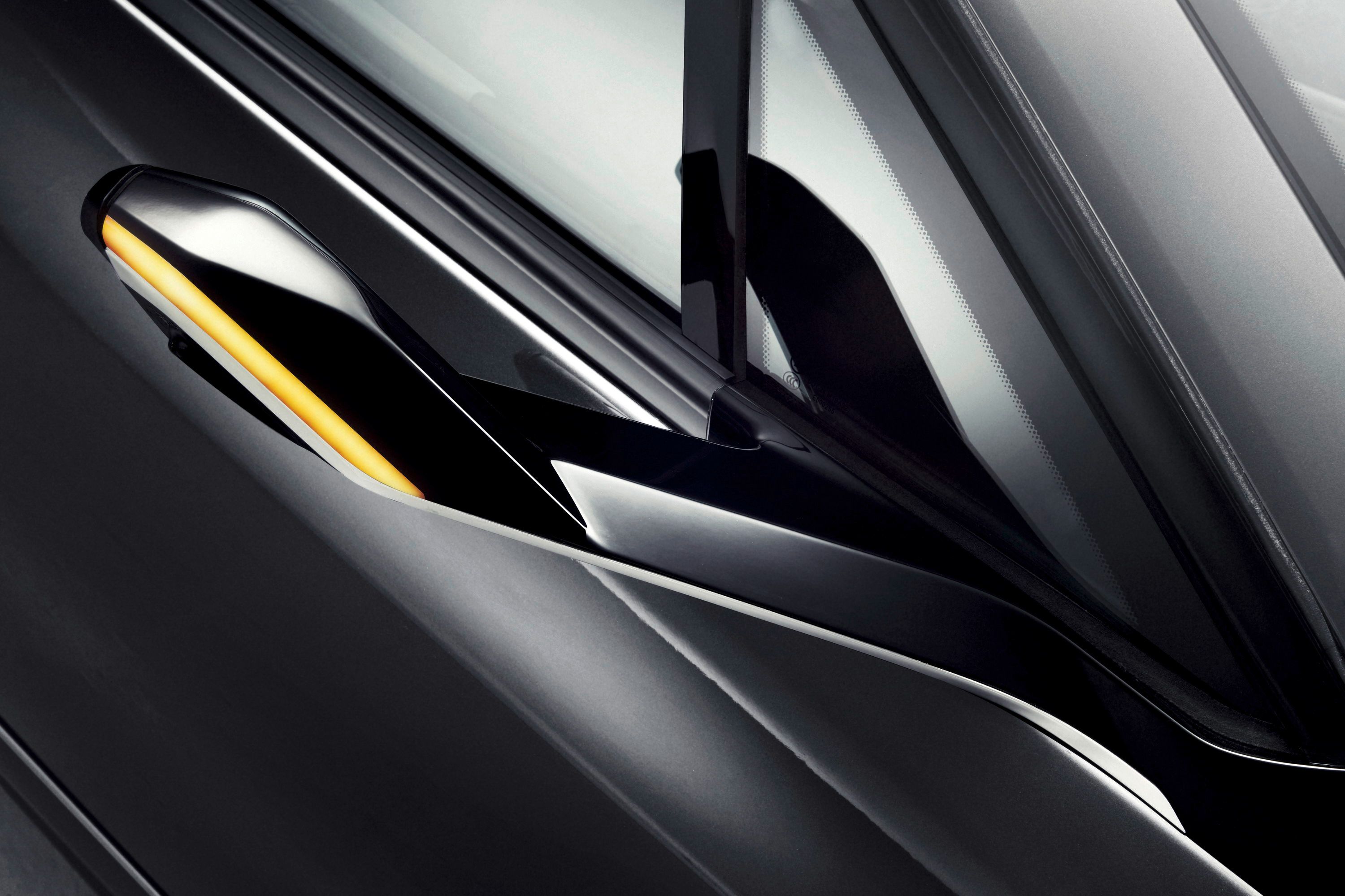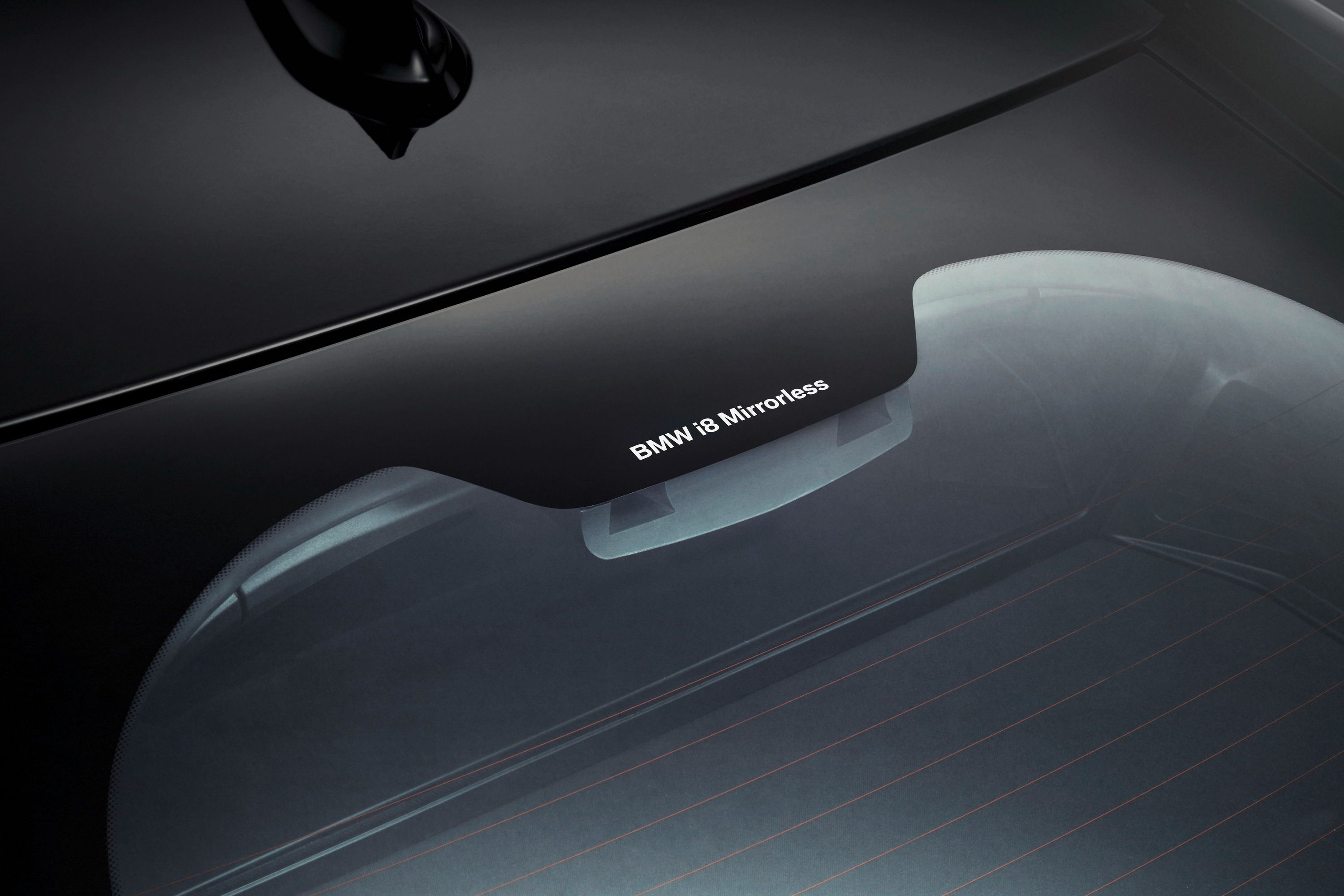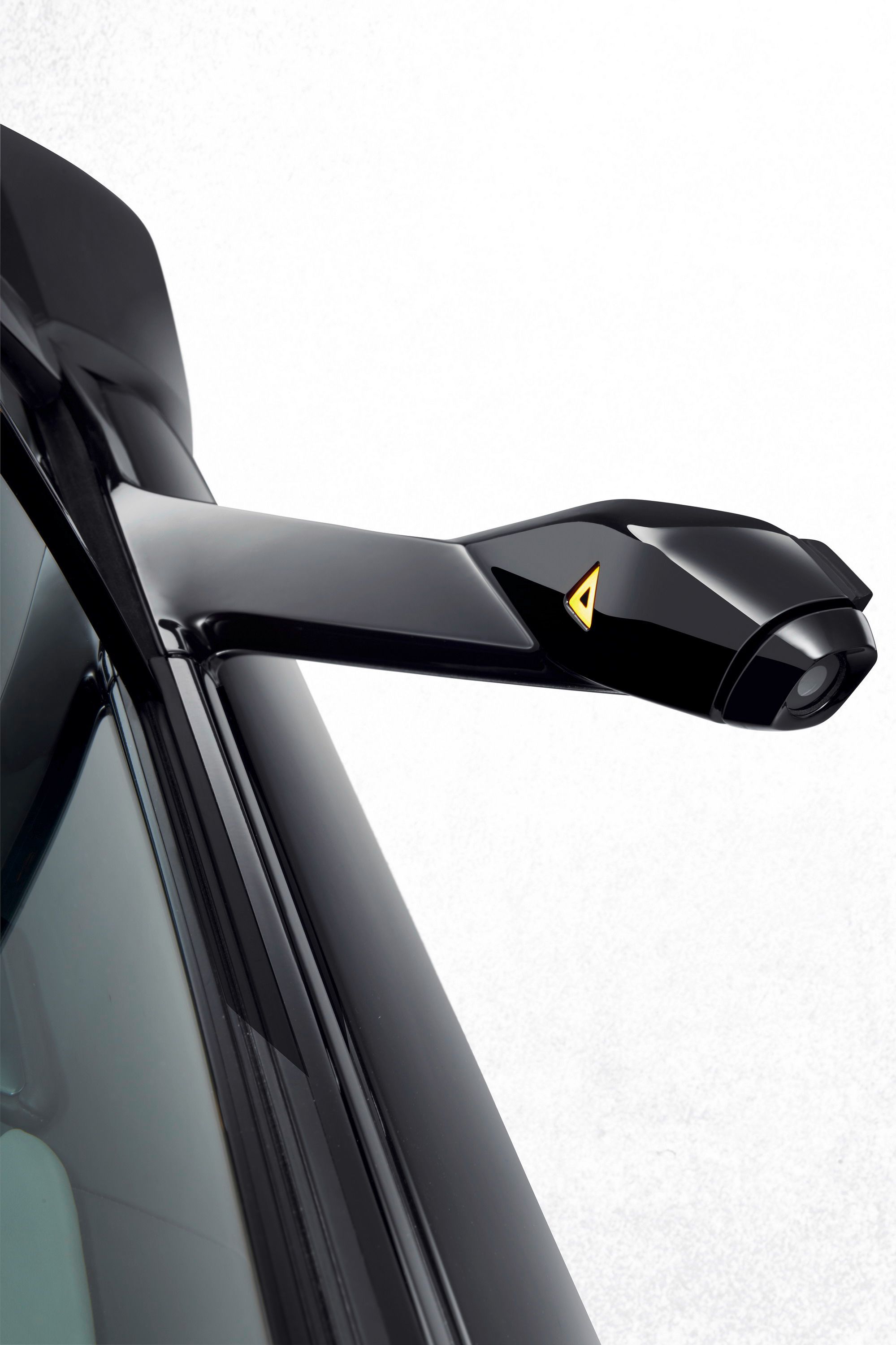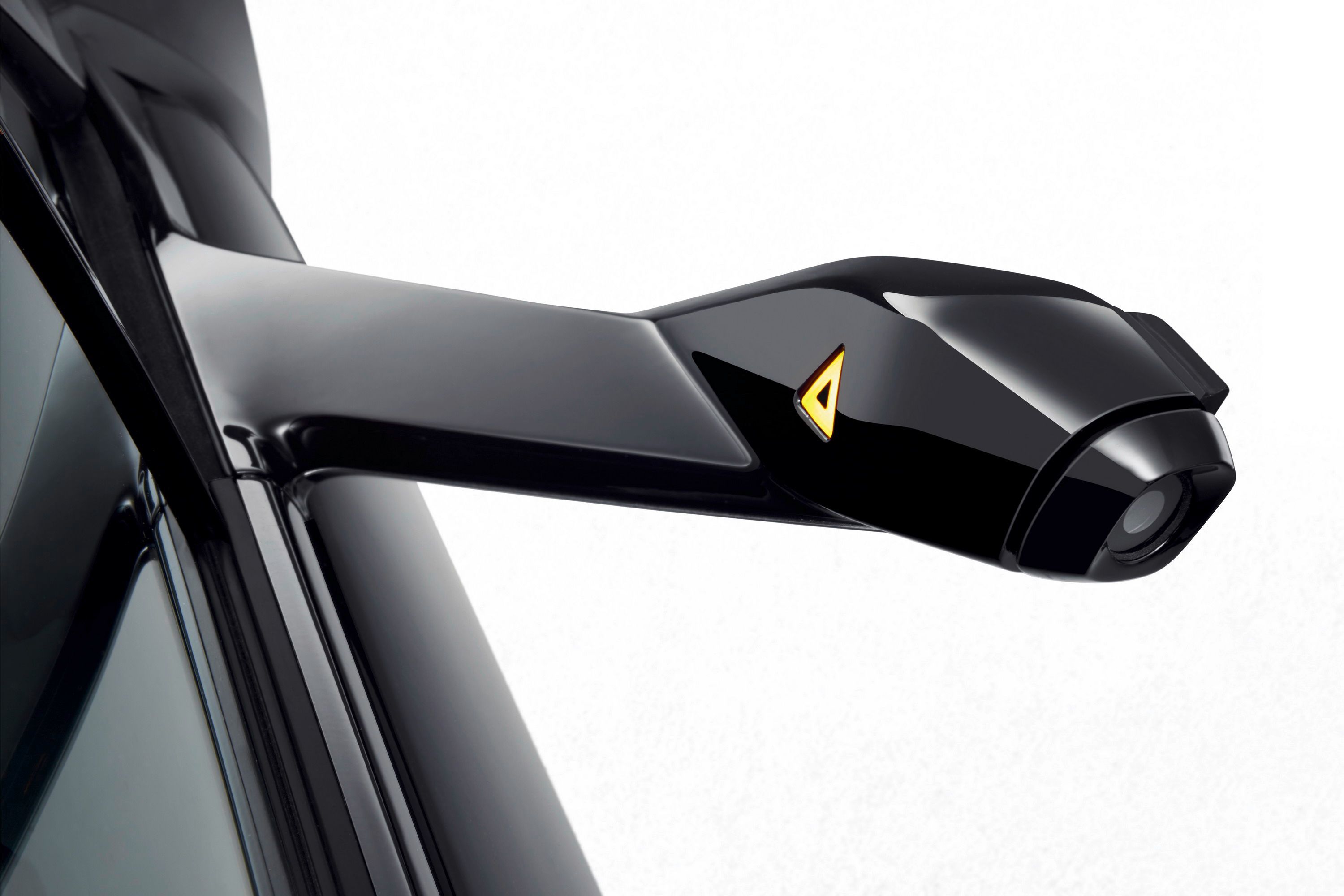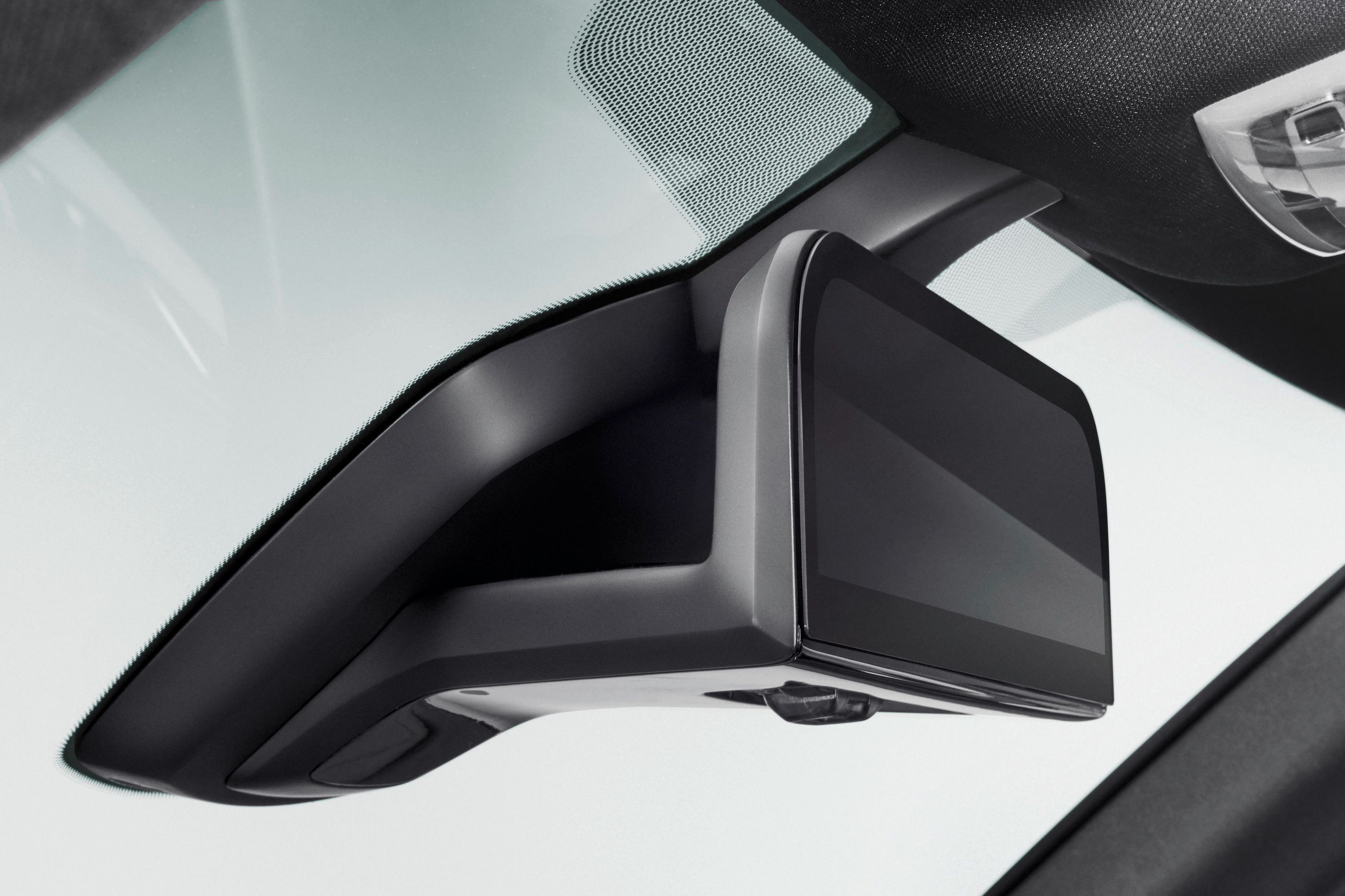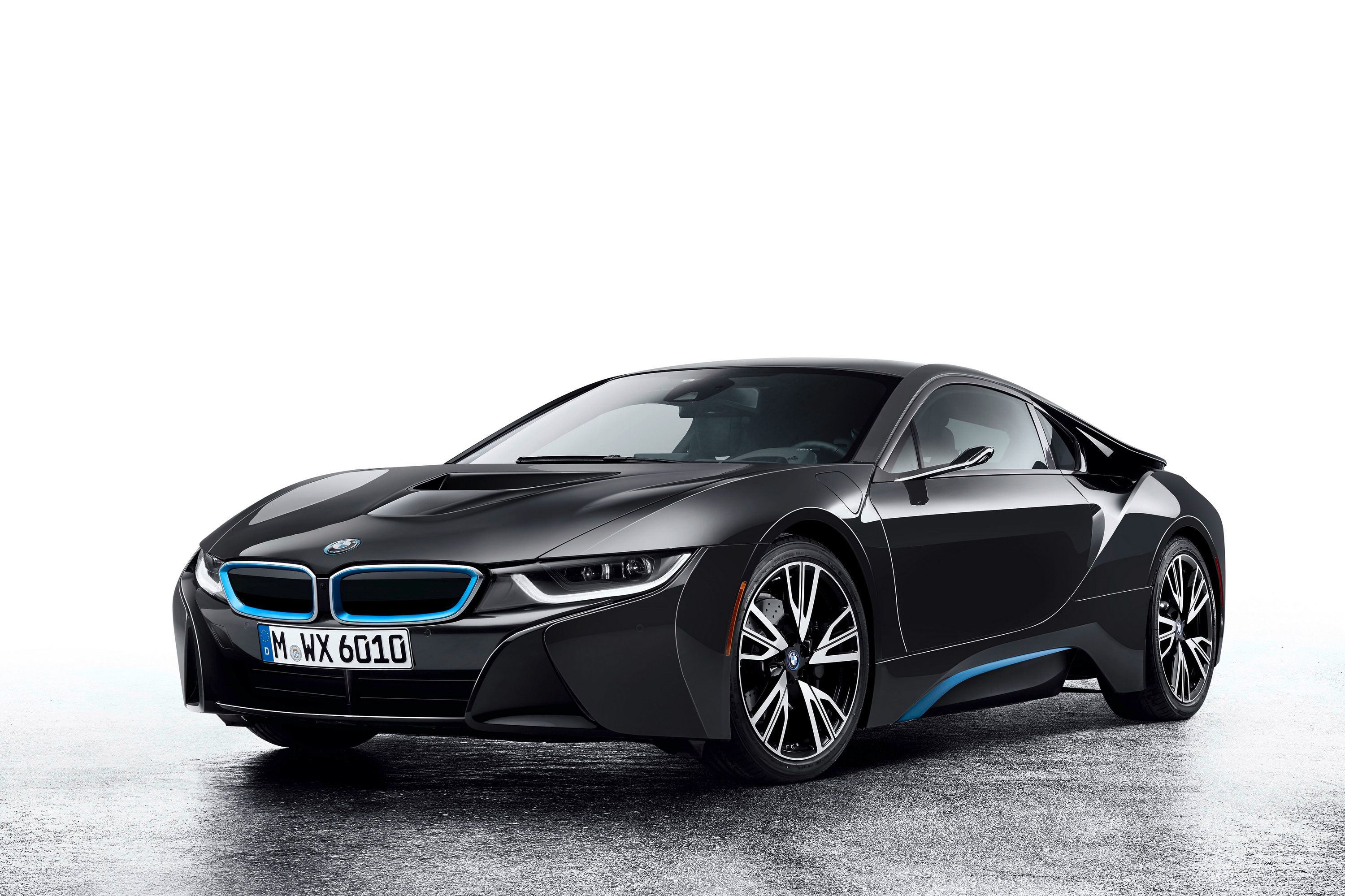As the BMW i8 continues to make its mark as a high-tech, cutting edge green supercar, the brand is on the lookout for ways to ensure that it remains at the absolute peak of the “hey, that’s cool” technology wave. To that end, BMW->ke178 showed the i8 Mirrorless Concept at the 2016 Consumer Electronics Show->ke3008 in Las Vegas. While identical to the production i8 at a casual glance, it’s quickly obvious where this concept’s name is derived from.
This i8->ke4622 has done away with low-tech slabs of silvered glass entirely, replacing the mirrors with an array of three rear-facing cameras. In addition to eliminating blind spots, the camera display can flash warning messages if the driver is about to merge in front of a faster-moving vehicle or perform a similarly hazardous maneuver. Additionally, the display is larger than a traditional mirror would be, and mounted on the dash to reduce driver eye motions. The display can also adjust itself in response to the steering wheel being turned, angling in the direction of travel when the car is backing up.
Concepts->ke169 with cameras replacing the mirrors are nothing new. BMW hasn’t made any noises about whether this concept will go into production or not, but considering the technological resources it has already on hand, it doesn’t seem like a stretch to call this one plausible.
Continue reading to learn more about the BMW i8 Mirrorless Concept.
2016 BMW i8 Mirrorless Concept
- Make: Array
- Model: 2016 BMW i8 Mirrorless Concept
- [do not use] Vehicle Model: Array
Exterior
At a glance, the i8 Mirrorless Concept is identical to the standard i8, in black with blue highlights in the grille and rockers. The side cameras have been mounted in smooth pods that are much smaller than conventional mirrors, and they’re integrated neatly in to the i8’s eye-catching design. Turn signal repeaters are included. Wind noise is reduced, and the pods act as aerodynamic rain diverters, just as side view mirrors do. The reduced surface area should provide a slight improvement in aerodynamics as well.
One advantage BMW cites to the exterior-mounted mirrors is a greater field of vision than the driver can get from inside the car. The wide-angle cameras also do not need to be adjusted. A heated, dirt-repellent coating keeps them clear in all weather.
Interior
Changes to the concept car are slightly less subtle on the interior, where a large display has been mounted where the interior rear-view mirror is usually found. At 300mm wide by 75mm tall, the display is larger than the standard mirror and combines images from all three cameras into a single image. The central camera is mounted at the top of the rear windscreen, where it’s almost completely hidden. Like most backup cameras, BMW’s system overlays guide lines on the image when backing, and the cameras adjust for glare to provide an equally clear view at night.
Apart from that the interior of the i8 Mirrorless Concept is unchanged, from the two-tone leather to the blue piping.
Drivetrain
The i8’s super-green 228-horsepower 1.5 liter twin-turbo 3-cylinder engine and 129-horse electric motor aren’t changed in this concept. Total system output is 357 horsepower, and with a two-speed transmission putting the power to all four wheels the i8 accelerates from 0-60mph in 4.2 seconds while returning a range of 330 miles. The suspension consists of double wishbones up front and a five-link rear; there are no economy-car parts hiding underneath the i8.
Conclusion
In terms of advancing technology the i8 Mirrorless Concept represents the “steady march” category rather than the “giant leap” side of the coin. The benefit of small but telling upgrades in technology, of course, is that they’re much more likely to be implemented in production models. This subtle but telling upgrade to the i8 might just reach showrooms in the future. At this time, BMW isn’t saying yea or nay.

